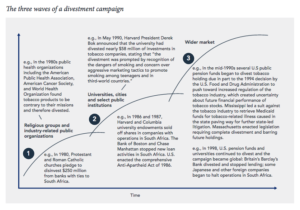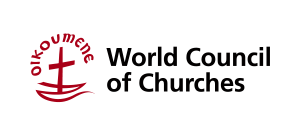Fossil Free Europe
Is divestment working?
As the Fossil Free Europe campaign turns 3 and celebrates the 160th divestment commitment, we take the long view and ask whether divesting from fossil fuels is still a good tactic for solving the climate crisis.
Back to the start
Barely 3 years have passed since the Fossil Free Europe campaign launched and sent ripples of excitement through the European climate movement in October 2013. With a high-energy European tour fronted by Bill McKibben and inspiring climate activists, it set out a bold, ambitious plan to take down the main culprit for the climate crisis – the fossil fuel industry!
By chipping away at the very social fabric that helped sustain it, activists hoped divestment would help weaken the world’s most powerful and destructive industry and allow the space for renewable alternatives and a society free from extractivism to flourish. It was time to start calling out the industry and its dangerous business plans publicly and turn the tide of public opinion against them.
It was clear that every one of us is part of public institutions like universities, churches, pension funds, banks, health organisations and museums that support the activities of Shell, BP, Total and co through their investments, and public ties. And 350.org and partners set about building a widespread people-powered movement to divest these institutions from fossil fuels and break those ties.
So nearly 3 years on, it’s worth taking stock of what’s been achieved. Is divestment working?
Riding our third wave
Back in 2013 a report by the Oxford Smith School made headlines when it called fossil fuel divestment the “fastest growing divestment movement” ever. There are 3 clear ‘waves’ of momentum identified by the report’s authors based on analysis of previous divestment efforts against apartheid or tobacco. In most cases, it took decades for those campaigns to reach the critical mass of divestments they needed to win.
Just 3 years into the Fossil Free campaign in Europe we’re rising towards the crest of our own “3rd wave” — the point at which a campaign takes on a life of its own, spreading virally. Ditching fossil fuels from your portfolio has moved swiftly from a radical, ethical stance taken by a handful of smaller, moral institutions to a mainstream consideration for investors large and small in 2016.
What started as a trickle of early divestment announcements from pioneering progressive institutions like the Quakers in the UK or the Church of Sweden has now swept up some of Europe’s largest pension funds and insurers, dozens of world-class universities, the world’s largest sovereign wealth fund, 5 major European capital cities, as well as philanthropic foundations and cultural institutions.
Who is divesting in Europe?
Looking at the European numbers alone is impressive — over 160 divestment commitments so far from 265 campaigns targetting everything from municipal pension funds to universities and national church endowments. European institutions represent nearly 84% of the global total and more than $4trillion in assets that have been purged of fossil fuel stocks so far.
It seems fair to say that divestment has grown far beyond the small group of individuals with a bold idea who started it. Today it’s a globally-connected movement which numbers almost 80,000 people in Europe alone.
In the last year the capital cities of France, Germany, Norway, Sweden and Denmark have all pledged publicly to stop investing in fossil fuels, making international headlines. London, Amsterdam and many others will not be far behind judging by the pressure they’re under to stand on the right side of history.
40% of all universities committed to divestment worldwide are based in Europe, with the UK leading the way when Glasgow became the first in 2014 followed by another 24 institutions in quick succession thanks to the work of student group People & Planet.
And the divestment movement has spread virally across Europe with new grassroots campaigns popping up in France, Belgium, Switzerland, Norway, Italy and Finland recently.
Meanwhile French and Dutch activists are launching cultural divestment efforts modeled on the hugely successful Liberate Tate campaign, targeting iconic institutions like Le Louvre and the public ‘green-washing’ that fossil fuel sponsorship provides to the industry. And a group of British politicians is now working to divest every UK member of parliament’s pension fund from fossil fuels.
Shifting public opinion is the name of the game
While some continue to dismiss divestment, arguing it will have no discernible impact on the bottom line of fossil fuel companies, they miss the point of the campaign entirely — success hinges on the stigmatisation of fossil fuels. We must measure how well the Fossil Free campaign is doing not by the amount of money divested from this or that oil company, but by how socially acceptable it is to invest in or be publicly associated with this industry.
And when investors as diverse as the British Medical Association, the World Council of Churches, the Rockefeller Brothers Fund, the city of Paris, Stockholm University, Tate Britain museums and Allianz Insurance all turn their backs on the fossil fuel industry, you know that message is starting to get through loud and clear to a wide-cross section of society.
With solar power, wind energy, tidal and hydro-energy leaping ahead in terms of affordability, popular public support and cost effectiveness per kilowatt hour, fossil fuel companies have never had a worse reputation or been more on the defensive (with even the boss of EURACOAL feeling like coal bosses will be as hated as ‘slave-traders’ in their day).
A huge, prolonged slump in global oil prices has only helped campaigners make the case for divestment. Meanwhile, coal and tar sands are becoming increasingly economically unviable too; extreme energy projects like shale gas or lignite coal are stymied by legal challenges and a resurgent global ‘blockadia’ using civil disobedience to keep fossil fuels underground.
And yes, the window for averting a serious global climate crisis is closing fast, indeed for some in vulnerable areas it’s already too late to avert impacts like rising sea levels, floods and wildfires. We don’t have the time or the power to stop the whole fossil fuel industry — but divestment gives us a shot at holding it back just enough to let renewable alternatives leapfrog it.
What comes next?
It’s an inconvenient truth that a number of institutions have stopped short of full divestment, opting instead to divest only partially from coal or tarsands. Either deliberately or unwittingly, they are falling right into a trap laid by the fossil fuel majors.
The Shells, BPs and Exxons are willing to sacrifice ‘dirty’ coal companies (& their workers) over the next few years, while they use every opportunity to promote gas as a ‘clean’ bridge fuel. It’s a tried and tested bait-and-switch strategy.
But the science and maths are clear: to avert a climate crisis we must stop ALL new fossil fuel exploration immediately and keep at least 80% of current oil, coal and gas reserves in the ground.
Investors who divest only partially or those who still promote shareholder engagement as a way of transforming companies from the inside are guilty of a dangerous incrementalism that serves only to maintain the status quo in favour of fossil fuel industry profits.
As divestment campaigners, we will need to remain vigilant to these pitfalls as we increase the pressure on our institutions to #DivestTheRest. History has shown that nothing and noone is resistant to change when enough people stand together peacefully to demand it.
And yet, we aren’t a big- or powerful enough movement quite yet. Talk to the average person on the streets about divestment and they may still stare at your blankly — we still have work to do. Our job now is to build on the huge momentum of the last three years, drawing on every creative tactic in our toolkits, to grow this divestment movement into an unstoppable popular force for change. We need to turn 80,000 people and 150 divestments into 800,000 people and 1500 commitments
Over the coming year, you can expect to see bigger, bolder and far more coordinated action at a global, national and regional level to expose the insanity and immorality of the fossil fuel industry’s plans. The third wave is on its way and our movement needs to be ready to ride it!
In 2013 no-one quite anticipated just how powerful a force for change we could be when we set out to morally bankrupt the companies responsible for climate change. Today as we look forward, that goal seems closer than ever to being realisable.
This blog was written by Louise Hazan, who launched the Fossil Free campaign in UK universities back in 2013 and has been working with 350.org to spread and support the Fossil Free campaign across Europe ever since.
Your thoughts
What stands out for you from the last 3 years? Are there any lessons you’ve learned you want to share with other divestment campaigners? Or perhaps you just want to share an article, video or photo about a divestment movement win in your local area – go ahead!








